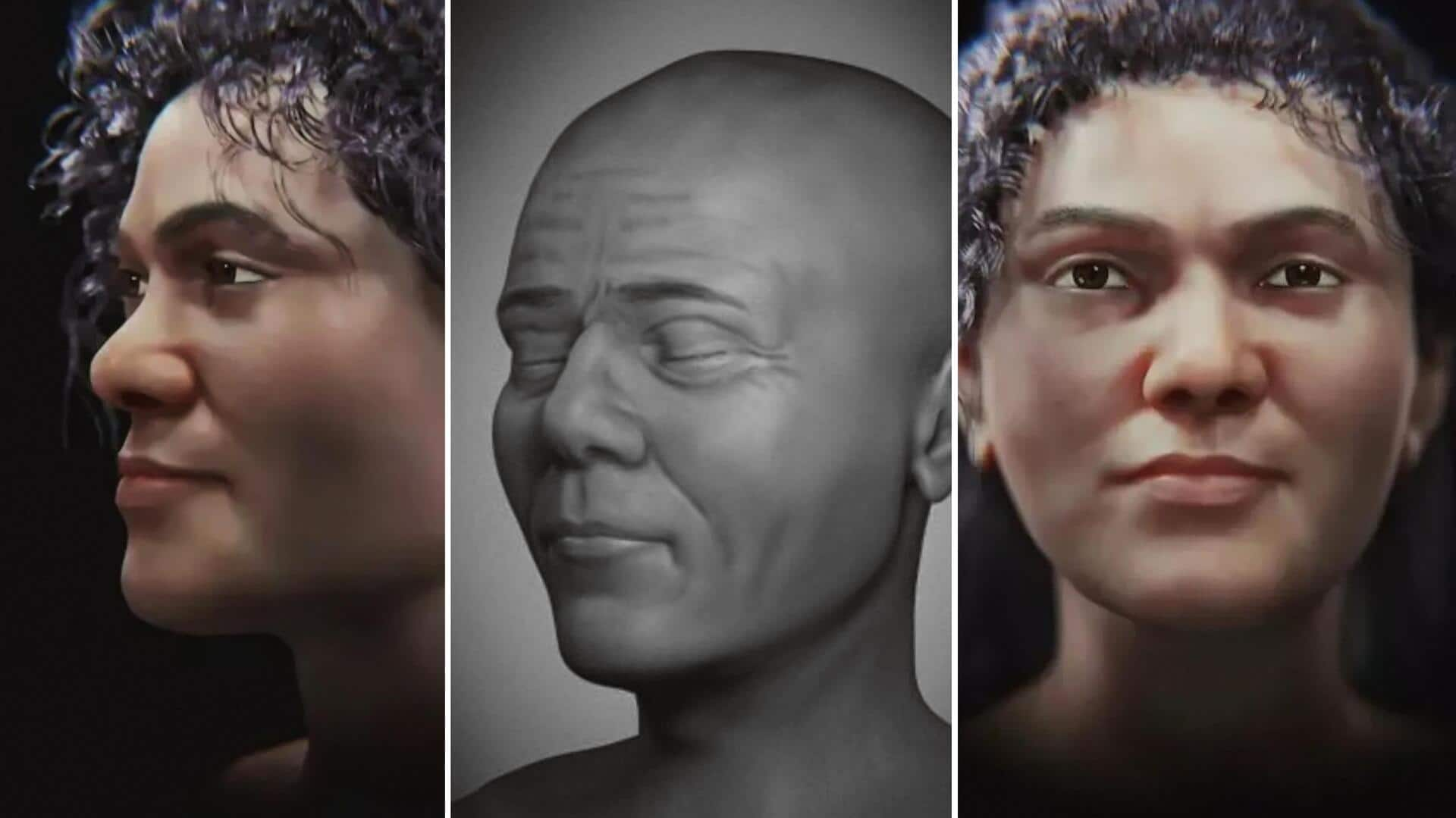
Face of oldest-modern woman who lived 45,000 years ago reconstructed
What's the story
A 45,000-year-old woman's face has been roughly reconstructed by an international team of researchers. Named Zlatý kůň, the woman's remains were found more than 70 years ago, buried in a cave system in the Czech Republic. She is reportedly the oldest modern human to be genetically sequenced. The image shows a woman with brown eyes, dark curled hair, and light brown skin.
Attempts to reconstruct
Many attempts have been made to reconstruct her face
Reportedly, many attempts were made to reconstruct her face ever since her skull was discovered. However, the latest paper has come close to creating a look-alike version of her facial approximation. According to the recently published paper, the scientists created the digital face using statistical data from the 2018 computed tomography (CT) scans of her reconstructed skull.
9 pieces
The skull consisted of nine pieces
The nine-piece skull is kept by the Department of Anthropology at the National Museum in Prague, according to Interesting Engineering. Due to missing the parts of the skull, researchers were unable to use the bones for the facial experiment. To reconstruct the structure, the paper's authors relied on scientific data, as they lacked direct access to Zlatý kůň's fossils.
Genetics
She was part of a population of early modern humans
Not much is known about the woman's genetics and what she may have looked like. However, a DNA analysis of the skull revealed that her genome carried roughly 3% Neanderthal ancestry. This means that she was part of a population of early modern humans who likely mated with Neanderthals and that her genome was the oldest modern human genome ever to be sequenced.
Quote
'Skull was gnawed by an animal'
Cicero Moraes, Brazilian designer and co-author of the paper told Live Science that the woman's skull was "gnawed by an animal after her death." "This animal could have been a wolf or a hyena (both were present in the fauna at that time)," Moraes said.
Creating the image
How the image was made
Moraes stated that his team created the image with a speculative version due to limited data on the possible color of skin, hair and eyes. "Once we had the basic face, we generated more objective and scientific images, without coloring (in grayscale), with eyes closed and without hair. Later, we created a speculative version with pigmented skin, open eyes, fur and hair," he said.